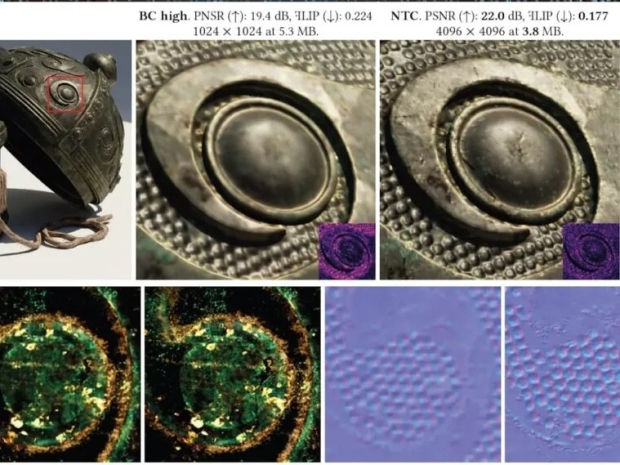This is similar to how Nvidia's DLSS changed the game by using AI-driven upscaling to improve frame rates without sacrificing image quality. Now, @opinali has shared results of rendering tests that combine NTC with DXR 1.2’s Cooperative Vectors. One of the key benchmarks was the “shoe render,” where VRAM usage dropped significantly when NTC was enabled alongside the new DirectX features.
Neural Texture Compression works by using neural networks to compress and decompress textures dynamically, shrinking their memory footprint with minimal loss in visual quality. Microsoft’s Cooperative Vectors allow GPU shaders to collaborate more efficiently on small matrix and vector operations, which makes NTC’s compression and decompression pipeline far more efficient. Together, they create a workflow that runs seamlessly in standard DX12 game shaders.
The testing showed a huge performance difference. With NTC and Cooperative Vectors enabled in “Default” mode, the texture rendered at 2,350 FPS. Disabling the feature entirely, falling back to DP4A mode, dropped performance to just 1,030 FPS. That’s almost an 80 per cent performance boost when using the combined technologies.
VRAM usage saw a cut. Since textures are compressed far more efficiently, the memory overhead is drastically reduced, which will be particularly useful for large-scale games with ultra-detailed assets. However, at this stage NTC is exclusive to Nvidia GPUs. Intel and AMD haven’t yet introduced competing neural compression toolkits that can integrate with DXR in the same way.
NTC is only available with Nvidia's latest 590.26 preview drivers, which bring Smooth Motion support. As with most preview drivers, there’s a chance of performance instability, but the potential is clear. Once these refinements mature, the next wave of GPUs will see significant gains purely from software-level improvements.
This shows that performance leaps in the future won’t come just from faster hardware but also from smarter rendering techniques, with AI-driven compression and new DirectX features working together to redefine memory efficiency.




